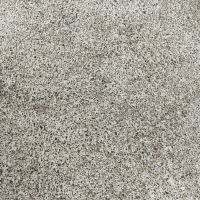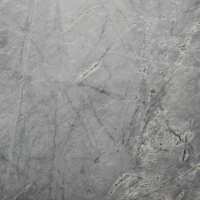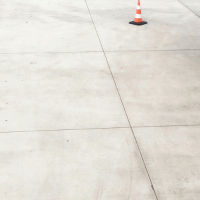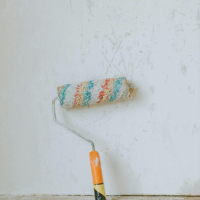Introduction
Repairing and restoring old concrete floor finishes is a significant task, involving steps and materials designed to address flaws, ensure durability, and maintain aesthetic consistency. The process, which typically includes surface preparation, application of repair materials, and finishing techniques to integrate the existing concrete seamlessly, is a crucial part of our work. Based on the provided research papers, the critical aspects of this process are below.
Surface Preparation
The first crucial step in repairing concrete is a meticulous process of thoroughly cleaning and preparing the damaged areas. This preparation is essential for ensuring that the repair materials adhere properly to the existing concrete, thereby enhancing the effectiveness and longevity of the repair. The cleaning process may involve using water, detergents, or specialised cleaning solutions to remove debris, dirt, oil, and other contaminants that could interfere with the bond between the new and existing materials.
In addition to washing the surfaces, using specific ground floor adjusting materials that harmonise with the existing concrete may be necessary. These materials are chosen not only for their functional properties but also for their colour and texture. Matching the repair material to the existing surface is vital for aesthetic reasons, ensuring that the repaired area blends seamlessly with the surrounding concrete, minimising the visibility of the repair work. Studies by Sihan et al. (2017) and Xiaozhong et al. (2016) emphasise the importance of this initial phase in the repair process’s overall success.
Another crucial step in repairing concrete is the pretreatment of damaged surfaces. This step involves the application of adhesives designed specifically for bonding new materials to old concrete. These adhesives play a critical role in ensuring the new repair material firmly attaches to the existing surface, preventing delamination or peeling over time. According to Sang (2016), this bonding is integral to the durability of the repair, making it essential that the pretreatment is executed meticulously. A well-prepared surface, combined with the appropriate adhesive application, lays the foundation for a successful concrete repair, ultimately leading to a durable and visually appealing result.
Repair Materials
A specialised type of putty that consists of a carefully balanced mixture of black and white cement is utilised to fill and repair various surface imperfections. This putty is combined with building glue to ensure optimal adhesion and performance. However, it is also meticulously polished to achieve a smooth and level surface, creating an ideal foundation for any subsequent treatments or finishes that may be applied. This technique is fundamental in the preparation process, as it significantly enhances the overall aesthetic and functional quality of the surface being treated (Sihan et al., 2017).
In the case of overlay repairs, a distinct formulation is employed. This formulation includes emulsified asphalt as the primary binder, accompanied by various modifying agents, anti-stripping agents, fibre stabilisers, and carefully selected mineral aggregates. This composite mixture is specifically designed to improve the mechanical properties and the long-term durability of the surface undergoing repair. Including these components ensures that the repaired area can withstand the stresses it may encounter over time, providing a robust solution for enhancing the integrity of the surface (Minmin & Caihong, 2019).
Furthermore, restoration mortars are not provided as one-size-fits-all solutions; they are tailored to meet specific requirements regarding mechanical strength, durability, colour matching, and desired finishes. This customisation is essential for ensuring compatibility with the original concrete surface, allowing the restoration work to maintain a cohesive appearance and structural integrity. By paying close attention to these factors, restoration mortars can effectively address a wide range of repair needs while maintaining the aesthetic and functional qualities of the underlying material (Miranda et al., 2022).
Finishing Techniques
Special putty, formulated explicitly from a precise combination of black and white cement, is integrated with building glue to create an effective solution for addressing various surface imperfections in concrete structures. This unique blend is purposefully designed to fill and repair flaws, ensuring that the repaired areas are not only functional but also aesthetically pleasing. After the application of this putty, it undergoes a meticulous polishing process. This step is essential as it results in a smooth, flat surface, which serves as a suitable base for any subsequent treatments or finishes that may be applied, significantly enhancing the visual appeal and longevity of the repair (Sihan et al., 2017).
A distinct mixture is utilised for overlay repairs, featuring emulsified asphalt and a selection of modifying agents, anti-stripping agents, fibre stabilisers, and mineral aggregates. Each component in this carefully crafted composition plays a crucial role in bolstering the mechanical properties and overall durability of the surface that undergoes repair. Including these elements ensures that the overlay not only adheres effectively to the existing surface but also withstands the various stresses and environmental factors it may encounter over time. This comprehensive approach aims to restore and improve the repaired surface’s integrity, extending its lifespan and enhancing its performance (Minmin & Caihong, 2019).
When it comes to the application of restoration mortars, these materials are explicitly tailored to align with the project’s mechanical strength, durability, colour, and finishing requirements. This customisation process is crucial as it guarantees that the restoration mortars are compatible with the original concrete surface, allowing for a seamless integration that maintains the overall construction’s structural integrity and visual consistency. By ensuring that these mortars meet the specific demands of each unique application, practitioners can achieve optimal results, resulting in repairs that meet and exceed expectations in performance and appearance (Miranda et al., 2022).
Considerations for Heritage Structures
In preserving and restoring heritage structures, compatibility in terms of chromatic quality, texture, and finishing is paramount. This is crucial not only for the visual coherence of the structures but also for maintaining their historical and cultural significance. The process of chromatic characterisation involves sophisticated techniques such as image processing, which enables conservators to analyse and replicate the original materials’ colour properties accurately. This ensures that any restoration work aligns closely with the existing aesthetic, thereby preserving the visual harmony of the structure.
In addition to colour matching, developing appropriate restoration mortars is another critical aspect of preserving heritage concrete. These mortars must be designed to match the original materials in terms of appearance and replicate their physical properties. This consideration is essential for maintaining the structural integrity of the heritage site, as mismatched materials can lead to deterioration over time. By employing scientifically informed techniques for chromatic characterisation and the formulation of restoration mortars, it is possible to achieve a balance that respects the original craftsmanship while ensuring the longevity and stability of heritage structures. This multi-faceted approach plays a vital role in the ongoing efforts to protect and maintain cultural heritage for future generations (Miranda et al., 2022).
Conclusion
While the various methods available for repairing and restoring concrete floors yield effective results, it becomes crucial to thoroughly assess the unique requirements associated with each project. This assessment should encompass a detailed understanding of the type of concrete involved, as different formulations and mixtures may necessitate distinct repair techniques. Furthermore, environmental conditions play a significant role in determining the appropriateness of specific methods; factors such as humidity levels, temperature variations, and exposure to moisture must be taken into account to ensure the chosen solution will withstand the specific conditions of the installation site.
Moreover, consideration should also be given to the intended use of the space where the repair is undertaken. Whether the area is for heavy industrial use, residential purposes, or commercial activities can influence decisions on the durability and finish of the concrete surface. To maximise the lifespan and performance of repaired concrete surfaces, it is essential to implement a regime of ongoing maintenance along with periodic inspections. Routine checks can help identify any potential issues before they escalate, allowing for timely interventions that protect the integrity and functionality of the concrete over time. By adopting a comprehensive approach that considers these factors, project managers can ensure that the repaired concrete floors meet immediate needs and provide lasting value and resilience against future wear and tear.






